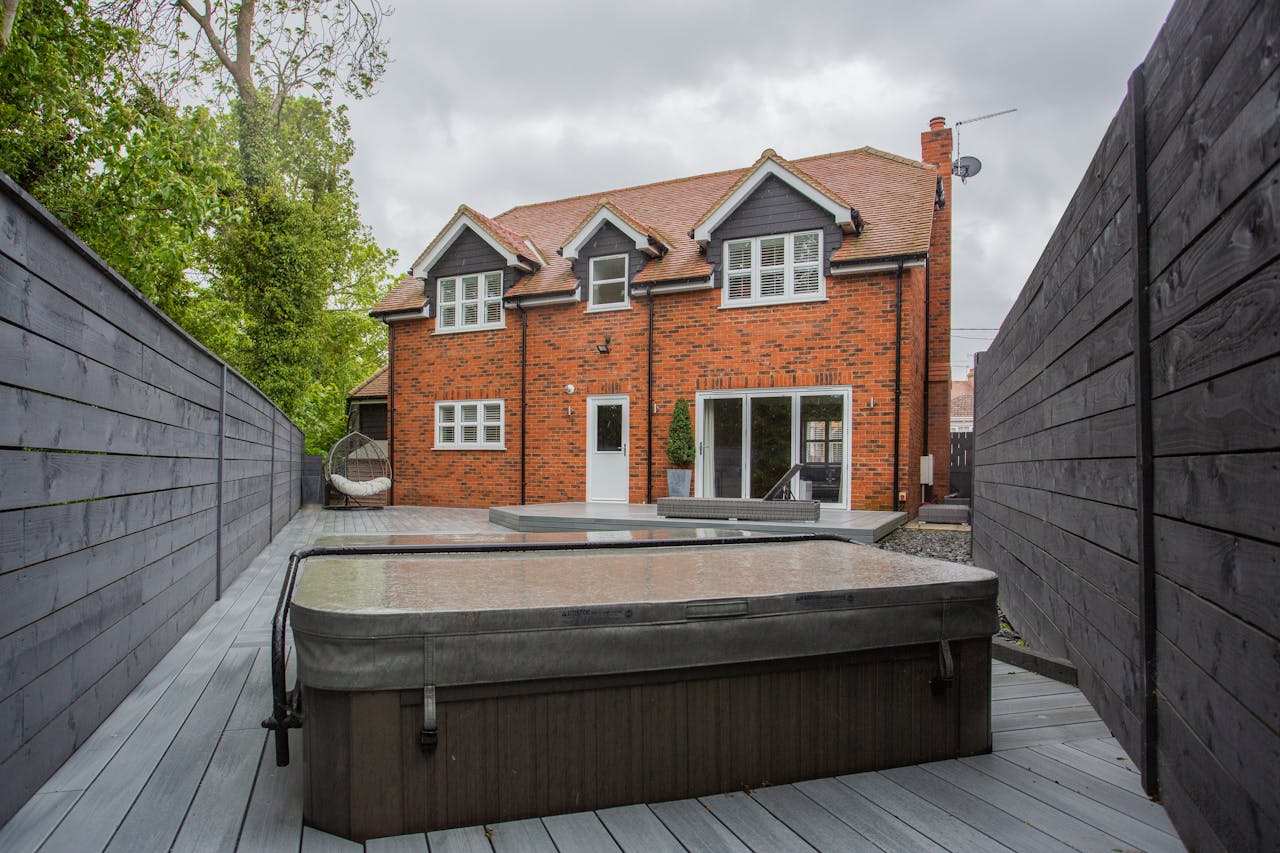
Before you dive into bubbly bliss, there’s one very important thing to think about—what’s underneath your hot tub? 🤔 The foundation you choose is key to keeping your hot tub level, safe, and long-lasting. Thankfully, there are several great options out there, whether you’re looking for something budget-friendly, ultra-stylish, or somewhere in between. Let’s break down the most popular hot tub base choices, along with their pros, cons, and affordability!
🪨 1. Concrete Slab – Strong & Reliable
Best for: Long-term durability, heavy hot tubs, permanent setups
Cost: 💲💲💲 (mid to high)
A concrete slab is the classic go-to for hot tubs. It’s sturdy, long-lasting, and creates a completely flat, secure surface. It’s perfect for larger or more permanent hot tubs and works well in most climates.
Pros:
✔ Super strong and stable
✔ Low maintenance
✔ Long lifespan
Cons:
✖ Higher upfront cost
✖ Needs professional installation
🧱 2. Paver or Brick Base – Stylish & Solid
Best for: Aesthetics and durability on a mid-range budget
Cost: 💲💲 (moderate)
Pavers offer a great balance of form and function. They look beautiful and allow for some creativity with patterns and color. As long as they’re properly leveled and supported with a gravel/sand base underneath, they’re strong enough to hold your hot tub securely.
Pros:
✔ Customizable and stylish
✔ Good drainage
✔ More affordable than concrete
Cons:
✖ Needs proper leveling
✖ Takes time to install
🪵 3. Decking – Warm & Welcoming
Best for: Elevated hot tub spaces, cozy aesthetics
Cost: 💲💲 to 💲💲💲 (varies by material)
Wood or composite decking can make your hot tub feel like part of a luxury resort. If properly supported with reinforcements, decks can handle the weight of a hot tub and blend beautifully into your outdoor design.
Pros:
✔ Looks amazing
✔ Great for built-in or sunken tubs
✔ Comfortable underfoot
Cons:
✖ Must be reinforced
✖ Requires upkeep (especially real wood)
🪨 4. Crushed Gravel Pad – Budget-Friendly & Easy
Best for: Affordable DIY installs
Cost: 💲 (low)
Gravel pads are a simple and cost-effective foundation option that still does the job right. With proper framing and compacting, gravel provides good drainage and a stable base for many standard hot tubs.
Pros:
✔ Inexpensive
✔ Easy to install yourself
✔ Great for drainage
Cons:
✖ Needs regular leveling
✖ Can shift over time if not packed tightly
🔲 5. Hot Tub Base Pads – Quick & Portable
Best for: Temporary setups, renters, or quick installs
Cost: 💲 to 💲💲 (low to mid)
These interlocking plastic or rubber base pads are designed specifically for hot tubs. They’re super easy to install—just snap them together on level ground—and they provide a flat, water-resistant base.
Pros:
✔ Fast and easy setup
✔ Portable and reusable
✔ No digging or heavy equipment needed
Cons:
✖ Not ideal for very large/heavy tubs
✖ Needs level ground underneath
💡 Quick Tip:
Always check your hot tub’s weight (with water and people inside!) and your ground’s drainage before choosing a foundation. You want a surface that’s flat, strong, and won’t shift when it gets wet.
🛁 Final Thoughts
No matter your style or budget, there’s a hot tub foundation that fits your backyard dreams. Whether you go all-in with a sleek concrete pad or keep things simple with gravel or base pads, the right setup sets the stage for years of bubbly bliss. 💦✨
Now, go forth and build that perfect base—your hot tub is waiting! 🔧🏡🫧